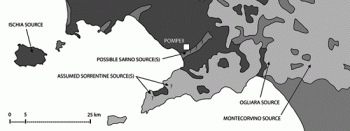American Journal of Archaeology | The Journal of the Archaeological Institute of America
You are here
The Production and Distribution of Pottery at Pompeii: A Review of the Evidence; Part 2, The Material Basis for Production and Distribution
April 2009 (113.2)
The Production and Distribution of Pottery at Pompeii: A Review of the Evidence; Part 2, The Material Basis for Production and Distribution
This study, in two parts, reviews the evidence from Pompeii for the production and distribution of pottery. Part 1 (AJA 113 [2009] 57–79) considers the production of pottery. Part 2, the present article, examines the material basis for pottery production at Pompeii (i.e., the availability and use of the raw materials) and its distribution. A consideration of the raw materials for pottery production available in the greater Pompeii region and the compositional characteristics of pottery from Pompeii permit some general observations about where these vessels were likely manufactured. While a large portion was probably produced at or near Pompeii, substantial numbers of vessels, including thin-walled wares, lamps, and amphoras, were probably manufactured elsewhere in the region. Non-amphora pottery was probably distributed to consumers at Pompeii by three methods: sale at the workshop, sale at a shop, and sale by a peddler. Some classes of non-amphora pottery imported from outside the region are abundant enough to suggest that they reached Pompeii via regularly functioning distribution mechanisms involving middleman merchants and/or the captains/crews of merchant ships. Other classes of imported non-amphora pottery that occur in only small quantities probably arrived via less regular mechanisms. Wine and fish products originating in the territory of Pompeii were probably packaged in amphoras at facilities located along the coast, and newly manufactured amphoras were probably transported to these establishments for filling from production facilities elsewhere. Pompeii may well be anomalous for the large portion of its pottery that was manufactured beyond the immediate environs of the town.
By J. Theodore Peña and Myles McCallum
American Journal of Archaeology Vol. 113, No. 2 (April 2009), pp. 165–201
DOI: 10.3764/aja.113.2.165
© 2009 Archaeological Institute of America


